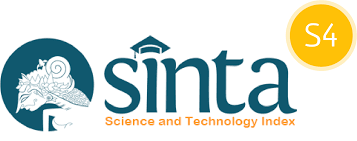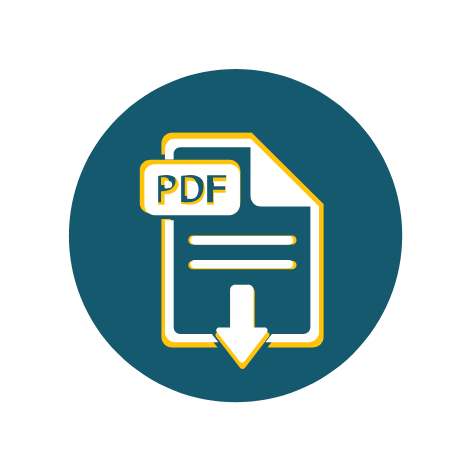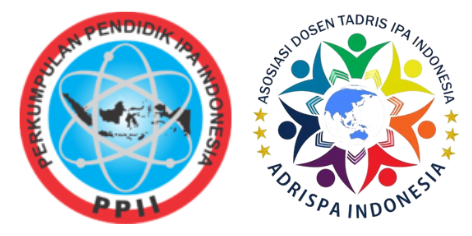Pengembangan E-book Interaktif Sebagai Sumber Belajar Mandiri Pada Materi Pemuaian Kelas VII SMP/MTs
DOI:
https://doi.org/10.35719/vektor.v2i2.46Keywords:
interactive e-book, self-learning, thermal expansion, e-book, pemuaian, sumber belajar mandiriAbstract
The development of interactive e-book as a source of self-learning on the material thermal expansion of the class VII SMP/MTs was carried out based on problems that occurred in one of junior high schools in Songgon, Banyuwangi, East Java, Indonesia. During the online learning process on thermal expansion material, science teachers used printed textbooks and learning videos, but students still had difficulty understanding the material from these two sources. One of the reasons is the lack of interactivity of both sources. The purpose of this study is to describe the results of the validation and student responses to the interactive e-book as a source of self-learning in the VII grade junior high school on thermal expansion material. The research and development design uses Thiagarajan's (1974) 4D model which consists of 4 stages including define, design, develop, and disseminate, but this research is limited to the develop stage. The subjects in this study consisted of 2 lecturers of UIN KHAS Jember as material and media experts, 2 science teachers as user experts and the response test was carried out on 32 students. The results of the validation of experts and users were found to be an average of 92.5% and 92.43%, it shows that interactive e-book as a self-learning resource are declared very valid to be used. The results of student responses have an average score of 90.58%. Descriptions of student responses are explained in the form of wordcloud where most students consider that the interactive e-book developed is "good" because it is equipped with writing, pictures, videos, animations, and practical simulations.
References
Aditya, P. T. (2018). Pengembangan Media Pembelajaran Matematika Berbasis Web Pada Materi Lingkaran Bagi Siswa Kelas VIII. Jurnal Matematika Statistika dan Komputasi, 15(1), 64.
Akbar, S. (2017). Instrumen Perangkat Pembelajaran. Remaja Rosdakarya.
Bayani, A. (2019). Pengembangan e-Book Matematika Berbasis Masalah Pada Materi Kubus Dan Balok SMP/MTs Kelas VIII. JPM : Jurnal Pendidikan Matematika, 5(1), 7.
Fitriyati, I., & Hidayat, A. (2017). Pengembangan Perangkat Pembelajaran IPA Untuk Meningkatkan Kemampuan Berpikir Tingkat Tinggi dan Penalaran Ilmiah Siswa Sekolah Menengah Pertama. Jurnal Pembelajaran Sains, 1(1), 8.
Hidayat, A., Suyatna, A., & Suana, W. (2017). Pengembangan Buku Elektronik Interaktif Pada Materi Fisika Kuantum Kelas XII SMA. Jurnal Pendidikan Fisika, V(2), 15.
Januszewski, A., & Molenda, M. (2010). Educational Technology: A Definition with Commentary (Vol. 12). Routledge.
Kurniawan, R. A., Rifa’i, M. R., & Fajar, D. M. (2020). Analisis Kemenarikan Media Pembelajaran PhET berbasis Virtual Lab pada Materi Listrik Statis Selama Perkuliahan Daring Ditinjau dari Perspektif Mahasiswa. VEKTOR: Jurnal Pendidikan IPA, 1(1), 19–28.
Lestari, R. T., Adi, E. P., & Soepriyanto, Y. (2018). E-book Interaktif. Jurnal KajianTeknologi Pendidikan, 1(1), 71–76.
Nurussaniah, N., Wahyudi, W., & Hidayati, N. S. (2017). Efektivitas Penggunaan Booklet Untuk Meremediasi Kesalahan Siswa Pada Materi Pemuaian Zat Di Kelas VII SMP Negeri 1 Tangaran Kabupaten Sambas. Jurnal Edukasi Matematika dan Sains, 4(2), 96.
Pradana, M. G. (2020). Penggunaan Fitur Wordcloud dan Document Term Matrix Dalam Text Mining. Jurnal Ilmiah Informatika, 8(1), 38–43.
Prihata, L. (2019). Pengembangan Buku Elektronik Interaktif Pada Materi Sumber Daya Energi Untuk Belajar Mandiri Dan Menumbuhkan Kemampuan Berpikir Kritis Siswa [Tesis]. Univertas Lampung.
Purwanto, A., Nurjayadi, M., & Tantaruna, J. E. (2020). Pengembangan e-Modul Elektrokimia Terintergasi Lingkungan Berbasis Kontekstual Untuk SMK Kompetensi Keahlian Teknik Otomotif. JRPK: Jurnal Riset Pendidikan Kimia, 10(1), 18–26.
Sabtaningrum, F. E., Wiyokusumo, I., & Leksono, I. P. (2020). E-book Tematik Terpadu Berbasis Multikultural Dalam Kegiatan SFH (School from Home). Jurnal Ilmiah Sekolah Dasar, 4(2), 153.
Saddhono, K., Sulaksono, D., & Rahim, R. (2019). Pengembangan E-Book Interaktif BIPA Bermuatan Kearifan Lokal Dengan Pendekatan Scientific-Thematic. Konferensi Internasional Pengajaran Bahasa Indonesia bagi Penutur Asing (KIPBIPA) XI, 389–401.
Sahria, Y. (2020). Implementasi Teknik Web Scraping pada Jurnal SINTA Untuk Analisis Topik Penelitian Kesehatan Indonesia. Proceeding of The URECOL, 297–306.
Santi, N. W., Suyatna, A., & Suyanto, E. (2018). Pengembangan Buku Elektronik Inti Atom Sebagai Bahan Ajar Mandiri Untuk Menumbuhkan Kemampuan Berpikir Kritis Siswa. Jurnal Pendidikan Fisika, 6(2), 12.
Shalikhah, N. D., Primadewi, A., & Iman, M. S. (2017). Media Pembelajaran Interaktif Lectora Inspire Sebagai Inovasi Pembelajaran. Warta LPM, 20(1), 9–16.
Sugiyono. (2015). Metode Penelitian & Pengembangan (Research & Development/R&D). Alfabeta.
Udin, Y., Oktova, R., & Sukmawati, S. S. (2017). Pemanfaatan Ms Excel 2010 Untuk Pengembangan Buku Elektronik Interaktif Tentang Transformasi Lorentz Dalam Pokok Bahasan Teori Relativitas Khusus Sebagai Sumber Belajar Mandiri Untuk Mahasiswa S-1 Pendidikan Fisika. Berkala Fisika Indonesia: Jurnal Ilmiah Fisika, 9(2), 13.
Wisudawati, A. W., & Sulistyawati, E. (2017). Metodologi Pembelajaran IPA. Bumi Aksara.
Yuen, M.-C., Koo, A.-C., & Woods, P. C. (2018). Independent Learning of Digital Animation: International Journal of Information and Communication Technology Education, 14(4), 107–120.
Downloads
Published
How to Cite
Issue
Section
License
Copyright (c) 2021 VEKTOR: Jurnal Pendidikan IPA

This work is licensed under a Creative Commons Attribution-ShareAlike 4.0 International License.
Authors who publish with this journal agree to the following terms:
- Authors retain copyright and grant the journal right of first publication with the work simultaneously licensed under the terms of the CC BY-SA 4.0 License that allows others to share the work with an acknowledgment of the work's authorship and initial publication in this journal.
- Authors are able to enter into separate, additional contractual arrangements for the non-exclusive distribution of the journal's published version of the work (e.g., post it to an institutional repository or publish it in a book), with an acknowledgment of its initial publication in this journal.
- Authors are permitted and encouraged to post their work online (e.g., in institutional repositories or on their website) prior to and during the submission process, as it can lead to productive exchanges, as well as earlier and greater citation of published work.







